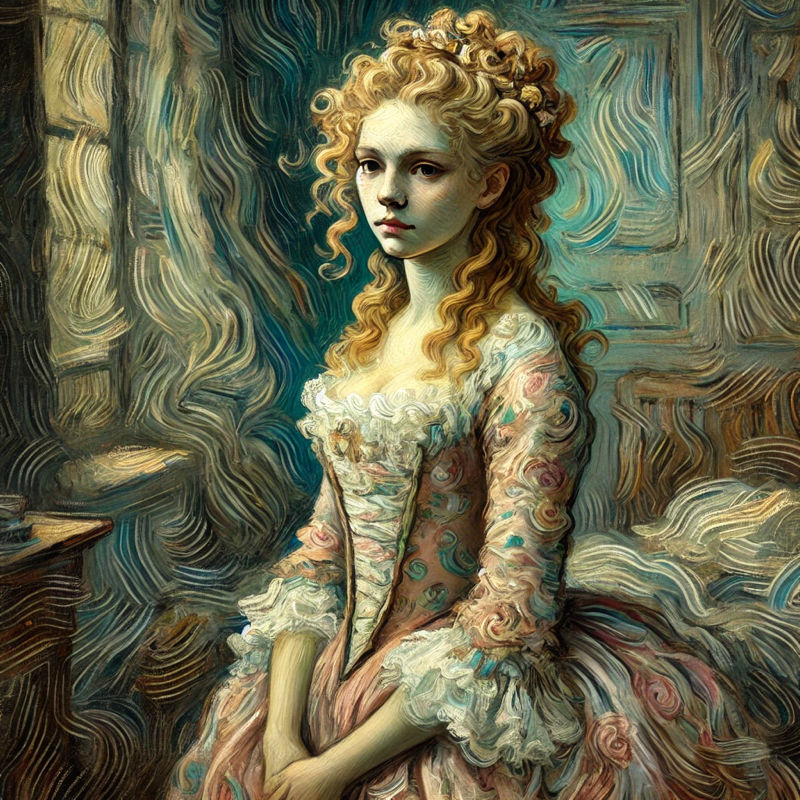Marie Antoinette: The Burden of Perception
Marie Antoinette was vilified in her time, blamed for France’s suffering, and misrepresented by history. Though she faced immense hostility, she displayed resilience in captivity. Her story reveals the dangers of misinformation, the weight of public perception, and the power of grace under pressure.

Introduction
Marie Antoinette, the last queen of France before the Revolution, has long been remembered as a symbol of extravagance, privilege, and detachment from reality. Her infamous association with the phrase "Let them eat cake"—a line she never actually said—epitomizes how public perception often distorts reality. Though born into royalty and married into one of the most powerful dynasties of the time, she was a young woman caught in the turbulent forces of history.
Her life was shaped as much by misinformation as by her own choices. The press and pamphleteers of the era painted her as a frivolous and selfish queen, fueling public resentment against the monarchy. But beyond the scandalous caricatures lay a person struggling with the weight of expectations, personal loss, and eventual tragedy.
The Public Perception and Its Consequences
From the moment she entered the French court as a teenager, Marie Antoinette was scrutinized for her Austrian heritage. In a time when France and Austria had been historical rivals, many in the court and the public viewed her with suspicion. As the economic conditions in France worsened, resentment against the monarchy grew.
The queen’s lifestyle at Versailles, with its elaborate balls and expensive dresses, became an easy target. While the nobility had long lived in excess, Marie Antoinette’s spending was exaggerated and framed as reckless disregard for the suffering of the people. The reality was more complex—she was constrained by court traditions and societal expectations, and her personal generosity was often overlooked.
When the Revolution gained momentum, her reputation was irreversibly damaged. The public no longer saw her as a queen but as a villain. She was accused of conspiring with foreign enemies, of corruption, and of immoral behavior. These accusations, largely baseless, culminated in her trial and eventual execution in 1793.
How She Handled It
In the face of overwhelming hostility, Marie Antoinette displayed remarkable composure. While her earlier years in Versailles were marked by attempts to escape into personal pleasures, her time in captivity revealed a woman of resilience and dignity.
Separated from her surviving children and placed in harsh confinement, she refused to publicly break down. Despite the humiliations she endured, she maintained a quiet strength, writing letters to her family and holding onto her faith. She faced her trial with dignity, knowing the verdict was predetermined. Even in her final moments, she remained composed, showing a courage that defied the image of the frivolous queen the revolutionaries had constructed.
Lessons We Can Learn
- Public perception is not always reality: Marie Antoinette’s life shows how misinformation can shape an entire narrative, sometimes unjustly condemning individuals.
- Resilience in the face of adversity: Despite being stripped of her title, wealth, and family, she maintained her dignity, teaching us the power of grace under pressure.
- The power of misinformation: Her story serves as a cautionary tale about how rumors and propaganda can distort the truth, with devastating consequences.
- How to cope with hardship: While she could not change public perception, she focused on what she could control—her own composure, faith, and dignity. This approach can be applied to modern struggles where external forces seem overwhelming.
Conclusion
Marie Antoinette’s story is not just about royalty and revolution; it is about how society perceives individuals and the lasting consequences of those perceptions. Her life reminds us that judgment is often shaped by incomplete information and external biases. Though she could not escape her fate, she remains a historical figure whose real story is far more complex than the one written by those who condemned her. In learning from her experience, we can reflect on our own roles in shaping public narratives and the importance of seeking the truth beyond appearances.
